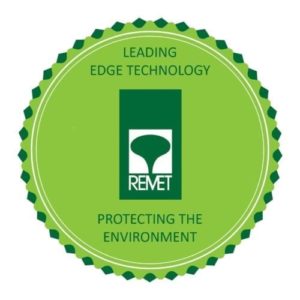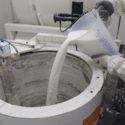Surfactants in Colloidal Silica Slurries
I may have started a ball rolling! First of all thanks for the positive (and negative) comments on the previous post. I was surprised by the number of questions which the post warranted, so I have decided to put all the queries in some kind of order, and try to answer your questions in the order of frequency of occurrence.
A number of people commented that use of Surfactants was a problem in their manufacturing system, problems ranged from poor rheology, short slurry life to excess foam to immiscibility. Whereas it would be wrong to answer specific queries (which I have answered privately), this appears to be a good forum for promoting the generalities. At the outset I will apologise! I trained as a metallurgist, not as a chemist, and therefore the following chemistry is unashamedly basic. So here goes: This is my precis of “All you needed to know about the use of surfactants, but didn’t want to ask!”
What is a surfactant?
Surfactants are compounds that lower the surface tension between two liquids or between a liquid and a solid. Surfactants may act as detergents, wetting agents, emulsifiers, foaming agents, and dispersants, and in many cases as a mixture of all.
Surfactants are usually organic compounds that are amphiphilic. (This is a new word that I learned this week, and which I have been desperate to use! And means that the surfactant molecule contain both hydrophobic groups and hydrophilic groups), Therefore, a surfactant contains both a water-insoluble (or oil-soluble) component and a water-soluble component. Surfactants diffuse in water and adsorb at interfaces between air and water or at the interface between a second phase and water. I’m really out of my depth with this chemistry, so it will suffice to say that the net effect of adding a surfactant is that surface tension is changed, usually in our case reduced, and that a water based system apparently becomes wetter!
There are a wide variety of surfactants available, but with the increasing restrictions on Alkyl Phenol Eyhoxylates, many foundries are facing a change on their operations. REMET UK recommends its REMET V12+ system throughout the process, and has considerable data with respect to its efficacy and effectiveness.
If you want to discuss surfactant chemistry in greater detail you should write to our Dr Grant Bradley on gbradley@remetuk.com or visit our web page www.remet.com and use the contact us facility.
Why do we use surfactants in Investment Casting?
In Investment Casting Surfactants perform two major functions;
In a prime slurry:
(1) they allow the slurry to wet wax patterns, and
(2) they aid in the initial wet-out of the refractory powder used in the slurry.
In a backup slurry, surfactants aid wetting of the refractory used and provide better penetration of the slurry into the dried preceding shell layer. Because they “make water wetter”, a surprising side effect of adding a wetting agent is that the free surface and capillary driven drying processes are made noticeably faster. This is surprisingly obvious when one considers the difference in capillary rise between pure water and water with the smallest drop of detergent added…try it for yourself!
Non-ionic type surfactants are most compatible with colloidal silica based slurry systems. Certain anionic surfactants can be used although compatibility must be established before using. Cationic types should not be used, they will destabilize the colloidal silica binder.
The usual outcome of the addition (unintentional or otherwise) of adding an unsuitable wetting agent is that a local, and later a general gelation will occur within the colloid. As the gel increases so does the viscosity of the slurry for a given total solids loading, this leads to poor rheology flow characteristics, a weakening shell and rapidly worsening cast quality, the resulting compensation actions usually lead to loss of control of binder solids and silica and a progressively weaker shell, again with deleterious effects in cast quality. (I should probably cover this in much greater depth in a later post)
The best way to add any surfactant is at slurry makeup. It should be introduced after the binder and any additional water of dilution have been added. The slurry tank should be mixing, as good agitation is necessary to disperse the surfactant. The surfactant should be added slowly, and enough time should be allowed after the addition to allow it to fully disperse or go into solution. Any antifoam addition should be made after the surfactant has been added.
Prime Slurries
The amount of surfactant needed in a prime slurry is much greater than for a backup because of the need to wet wax. A good starting concentration for many surfactants is 0.25% (on a mass to mass basis) of the total slurry liquids (binder and water). This equates to 9.5 ml./U.S. gallon. In some instances, more surfactant is necessary to effectively wet certain waxes. For these, it is recommended that the surfactant level be increased incrementally, up to a 0.50-0.60% level maximum. Too much surfactant can lead to other problems (foaming, etc.). The level of antifoam will probably have to be adjusted upwards if more surfactant is added. If one particular surfactant does not effectively wet waxes, except at very high concentrations, I suggest that REMET be contacted for assistance.
Back Up Slurries
The recommended level for use in a backup slurry is 0.05-0.10% based on total liquids. This keeps any foaming tendency to a minimum, while allowing for faster wetting of the refractory flour used. Perhaps the most important reason for adding surfactant to a backup slurry is that it allows for more complete slurry penetration into the dried, preceding shell layer. The surfactant, by lowering the surface tension, allows for better and more complete coverage around individual stucco grains, thus resulting in better bonding of the slurry and the stucco. This can decrease the incidence of delamination between coat.
There are some who claim that adding a surfactant creates a foam problem and shortens slurry life. However, by adding only small amounts of suitable surfactant, these problems seldom occur. This is especially true about slurry life if a compatible surfactant is used, that is, one that does not seriously degrade the colloid chemistry.
Notes and disclaimers:
Always read the SDS for every product before you use it.
If you have doubts about the suitability of any product contact your REMET territory manager to discuss. In this forum, I can only write in the most general terms so if you have a specific query please write to me.
Unless specifically identified as a specification value, the above chemical, physical and particle size distribution values are typical properties. They are not specification values. Contact your nearest REMET Sales Office regarding product specifications.
Information and/or recommendations based on research and technical data believed to be reliable. Offered free of charge for use by persons with technical skills, at their own discretion and risk, without guarantee of accuracy REMET makes no warranties, express or implied, and assumes no liability as to the use of its products or of any information pertaining thereto. Nothing herein is intended as a recommendation to infringe any patent.
< Back to insights



